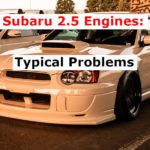Are Minivans Good in Snow? Not All of Them…
Minivans are an incredibly popular choice to comfortably haul a lot of people. And for that reason, a lot of big families choose to buy these cars. Even though their primary job is to transport a lot of people from one point to another, they might have to endure tricky situations on the way.
For example, during road trips, you might not know what lies ahead until you get there. In such situations, you need to have absolute trust in your vehicle to make it to the other side. It is very important to understand the capabilities of a vehicle to make an informed decision, and this article will help you exactly with that.
Are Minivans Good in Snow?
Minivans are heavy vehicles with a relatively long wheelbase, and their ground clearance is also significantly better compared to sedans. As a result, most of the minivans fare pretty well on snow and ice compared to other smaller cars.
Snow poses some unique challenges compared to other conditions. Continuous snowfall can build up layers of snow that will have to be plowed out of the way to drive through. And the vehicle should not lose its traction doing so.
Smaller cars with low ground clearance can get wedged if there is a lot of snow on the road. And since they are lighter, they will easily break traction when driving over patches of ice. The higher weight of the minivans gives them superior traction over difficult terrains.
Minivans also tend to have wider tires, which means more contact surface and more grip. All of these help the minivans to remain stable, and retain traction on surfaces where other smaller cars will get stuck.
They are also equipped with big engines that are usually found in SUVs, and they produce a lot of raw power low down in the rev range. The surge of torque at the low end of the powerband is what helps the minivans to become unstuck if they ever encounter such an obstacle.
Most of the minivans are durable and hardy enough to survive a good amount of abuse because many of them share their drivetrain components with SUVs that are designed to handle loads and obstacles far worse than that.
The versatility offered by minivans has allowed them to maintain their relevance decades after minivans came into existence. There are not a lot of places where you can not take a minivan. But obviously, they are not as capable as SUVs that are purpose-built with offroading in mind.
When driving on snow, the driver’s skill becomes an important factor in determining whether you will make it home or not. So it is very important that you learn the basics of driving on snow and ice before embarking on such adventures.
Also read: 3 Reasons Why Minivans are so Expensive
What Should Your Minivan Have to Be Good in Snow?
There are many features offered by manufacturers that come in handy, especially when driving on snow. You should always make sure that your Minivan is equipped with snow tires, Traction Control, ABS, EBD, ESP, and AEB to do well in snow.
1. Snow Tires
Snow/Winter tires are the single most important thing to add to your car to drive safely on snow. They are made of soft rubber compounds, so they stay flexible when the temperature drops. The tread patterns are unique, and the grooves are wider to allow the snow and water to drain quickly.
It provides 20-50% more traction on snow and ice compared to regular all-season tires. Some tires even have small studs to cut through the ice and provide superior traction. Snow tires also reduce the stopping distance by up to 2-3 times, drastically reducing the possibility of an accident.
Furthermore, you can use solutions such as snow chains or snow socks to provide additional grip to the tires.
Trending Video: How to Easily Bring Back to Life any Old Car Battery and Save Tons of Money (click to watch)
2. Traction Control (TC)
The Traction Control system uses various sensors to detect and prevent wheelspin. Wheelspin can cause the driver to lose control of the car, and it can cause oversteer or understeer through corners.
It is particularly helpful when accelerating from a stop on surfaces without a lot of grip. Traction control makes it much easier to climb slopes when it snows, and there is ice on the road. When the sensors detect spin, the power from the engine is momentarily cut out till that tire regains traction.
3. Anti-Lock Brake System (ABS)
ABS prevents the wheels from locking up under hard braking. If the sensors find that the wheel is locking up, it momentarily decreases the brake force.
It is a common mistake made by novice drivers to slam the brake as hard as they can while driving on snow or ice. This will just lock up the wheels and send the car into a skid. The car will not be able to steer when skidding, and it will end up crashing. If your car has ABS, no matter how hard you press the brake pedal, it will not lock up the wheels.
Also read: 10 Best Old Vans with Good Gas Milage
4. Electronic Brake-Force Distribution (EBD)
The EBD system is used to automatically vary the amount of force applied to each of the brakes at four corners. It takes several factors such as road conditions, speed, and weight distribution to figure out the correct amount of pressure required for each corner to brake without locking up the tire.
5. Electronic Stability Control (ESP/ESC)
The ESP system works in conjunction with the ABS and traction control to help the vehicle regain stability when it slips. It constantly monitors the steering angle in relation to the actual direction of travel. It cuts the power from the engine and taps the brakes to point the car in the correct direction.
6. Automatic Emergency Braking (AEB)
The AEB system uses sensors to detect any obstacles ahead. If it senses that a collision is imminent, it first alerts the driver. If the driver does not take any action, it automatically applies the brakes to prevent the car from crashing.
How Much Snow Can Minivans Handle?
How much snow a car can handle mostly depends on its ground clearance, for the most part. If you can drive the car without dragging much of the underside of your car, then you are good to go. If you try to push your way through the snow, it can dent the body panels, so you will have to proceed with caution if the snow is above the floor level.
Also read: 10 Cars Under $20K that Look Like They’re for $50K+
Do Minivans Need All-Wheel-Drive (AWD)?
FWD/RWD minivans with winter tires are well-equipped to handle a considerable amount of snow all by themselves. If you have a decent snow removal system in your locality, it is all you will need for your minivan. But if there are a lot of hills to traverse, and you have to constantly drive on top of thick layers of snow, then AWD will be a worthy investment for you.
If the car is equipped with AWD, the engine will be able to send power to all four wheels of the car at the same time. Most AWD systems in minivans send power to the rear wheels when it is necessary, like when experiencing wheelspin.
The difference between a 2WD minivan and an AWD is emphasized when driving on ice. In the 2WD car, you can feel the wheel spinning and the safety features such as TC and ESP working hard to keep you out of trouble. But in an AWD car, the slip is reduced by a huge margin, which gives you a lot of control over the car.
But minivans equipped with AWD do have some drawbacks compared to their 2WD counterparts. Due to the additional mechanical components running under the vehicle, the cargo space might decrease. Also, some manufacturers might not offer some specific seating layouts to account for the additional space required.
It is also significantly expensive to equip and maintain the AWD system. The fuel efficiency will also be lower than that of 2WD.
Can Minivans Drive on Ice?
Minivans can drive on ice provided you take adequate precautions beforehand. A lot of it boils down to the driver’s skill, but there are many features TC and EBD that can assist you. Studded winter tires cut through the ice and improve grip. You could also use snow chains or snow socks.
Also read: 7 Hondas with a Panoramic Sunroof (+Photos)
What are the Best and Worst Minivans in Snow?
Some of the best minivans that are currently on sale are Honda Odyssey, Toyota Sienna, and Chrysler Pacifica. All of them are equipped with a whole suite of advanced safety technology as standard, and these features are essential for winter driving. The Pacifica and Sienna are also offered with an optional AWD if you need it.
The Nissan Quest is probably the worst minivan in the current market. It has not received a proper facelift in years, and the design is starting to show its age. The features and technology are also subpar compared to its rivals.
Also, beware of the older cars in the used car market. Many of them were not equipped with the safety features found in today’s cars, so make sure to do your research before buying a used car. The AWD system in these cars can also be faulty if it was not properly maintained, and it can get quite expensive to repair. Test drive it properly to determine the health of the drivetrain components.






